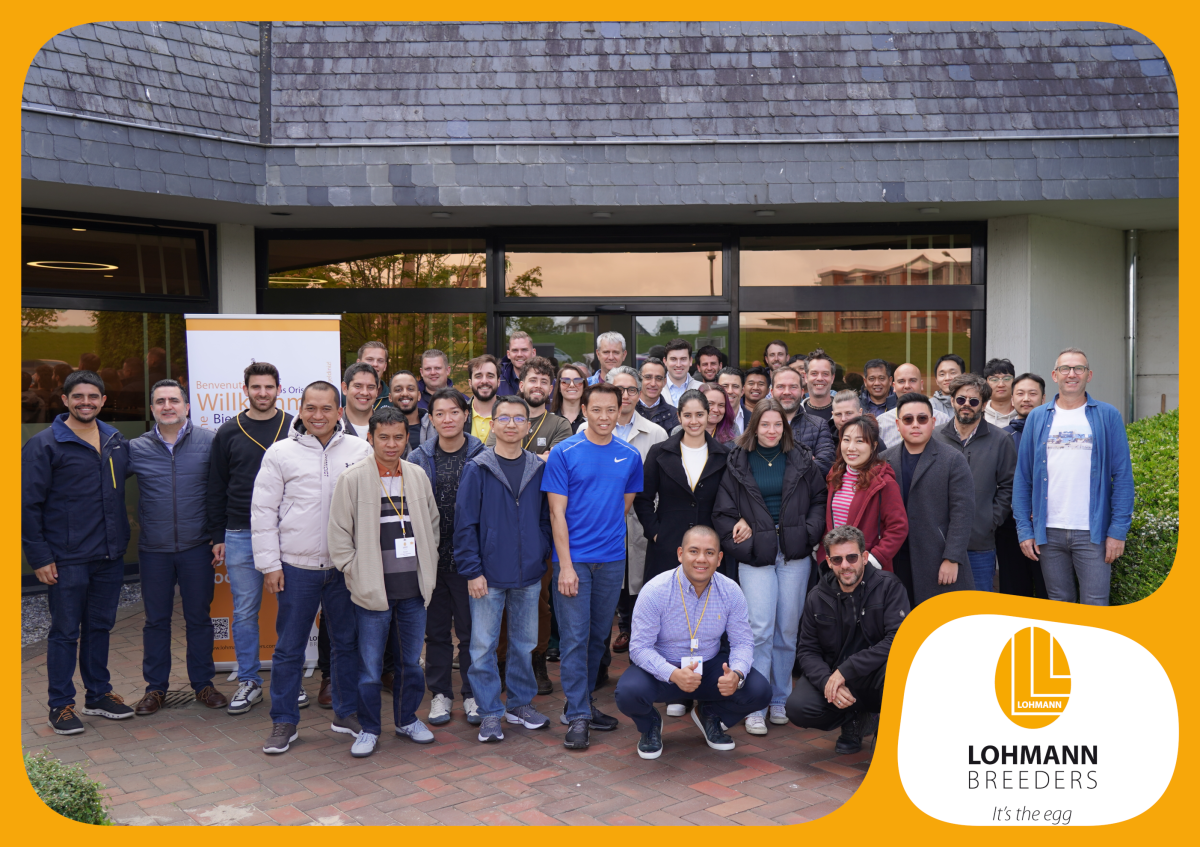Keywords
Calcium supply, laying hens, egg quality, shell strength, health, welfareCo-Authors
H.-H. Thiele, G. Díaz (Biomix S.A.) and L. Armel Ramirez (Pronavicola S.A.)
Laying hens produce a lot of eggs as hatching eggs or shell eggs for human consumption. Good quality eggs with strong shells ensure farm income and meet the demands of hatcheries, processing plants, egg traders and consumers. A maximum of “saleable” eggs per hen housed is desirable to assure the economic success of any layer business. Selection for improved shell stability enables hens to lay more eggs with good shell quality. But egg producers and feed manufacturers must provide layers an adequate nutrient supply with all necessary raw minerals for proper shell formation. Attention to optimal nutrition is recommended throughout the laying period and is becoming even more significant as the laying period is being extended.
During their lifetime, modern laying hens produce a lot of eggs, mostly “well packed” for handling as hatching eggs or shell eggs for human consumption. Only eggs harvested “well-packed” from the nests (or cages) will add to farm income and meet the demands of hatcheries, processing plants, egg traders and consumers, whereas eggs with insufficient shell quality seldom recover the production cost and may be a complete loss. Moreover, each broken egg can soil many other eggs during collection, which is a special problem in countries like Germany, where shell eggs are not allowed to be washed. The percentage of “saleable” eggs (with clean and strong shells) per hen is essential for the economic success of a layer business and efficient conversion of feed to food for human consumption.
Selection for improved shell stability is an integral part of continuing efforts to enable modern laying hens to produce more eggs with good shell quality over a longer period of time. Egg producers and feed manufacturers should enable the birds to express their genetic potential, providing an adequate nutrient supply with all necessary raw minerals for proper shell formation. Attention to optimal nutrition is recommended throughout the laying period and is becoming even more significant since as the laying period of flocks is being extended. With increasing age and cumulative number of eggs produced, the ability of hens to produce eggshells of good quality tends to decline. This is partly due to the exhaustion of calcium metabolism of the bone, but can also occur as a result of liver damage. Acute fatty liver syndrome or chronic congestion of the liver will accelerate the loss of shell stability with age. The shell of a hen’s egg consists up to 90-95% of calcium carbonate which is embedded in a protein matrix that determines the strength of the egg. The eggshell is made essentially from lime, which is made available either from the daily feed supplied or from the long bones, especially the medullary bone marrow. The calcium reservoir of this bone is formed with the onset of sexual maturity until shortly before the onset of egg production. The calcium in the bone is bound to phosphate. How much of the lime actually used to form an eggshell comes from the recent dietary intake and how much from the bone varies and depends on the availability of the latter at the time of shell formation (Farmer and Roland, 1986). Since the hens have only limited reserves of calcium in their bones, this must be supplemented with the daily dietary intake. Today’s commercial laying hens lay an egg almost every day and therefore require about 4-5 grams of calcium per day (Bar, 2009; Lohmann Tierzucht, 2011). In order to support the complex process of eggshell formation, the hens should also be supplied with sufficient phosphorus and vitamin D3.
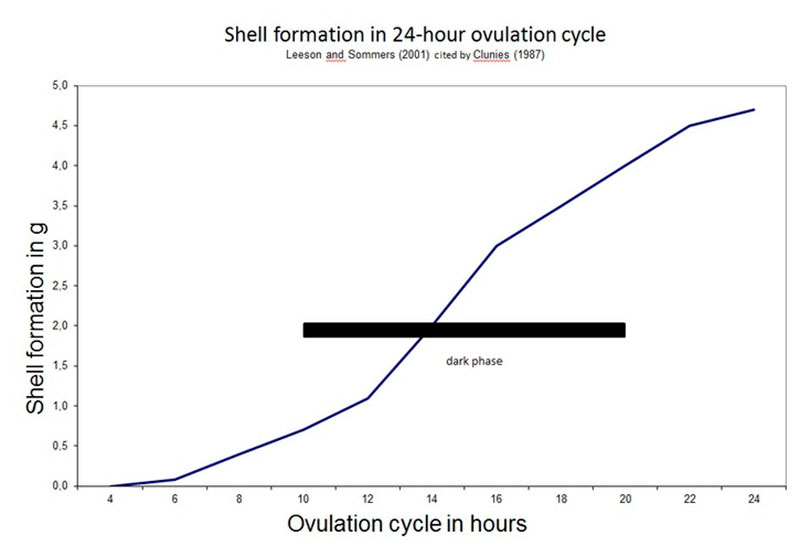
Figure 1: Shell formation in a 24-hour ovulation cycle (Clunies (1987) cited by Leeson and Summers (2001))
The process of eggshell formation takes place mainly during the hours of the night. The most intense period of shell formation is about 12-18 hours following the laying of an egg. The intensity reaches its peak at 18 hours after an egg is laid and starts to decline again before the next egg is laid (Clunies and Leeson, 1995). During this time, enough lime should be available from the gastro-intestinal tract. Since the retention period of ingested feed in a chicken’s digestive system is relatively short, i.e. about 3-4 hours (Hurwitz and Bar, 1966), it is important to feed the bird with lime at the right time. Scientific studies have shown that laying hens with ad libitum access to lime have a particularly high appetite for lime in the last 5-6 hours of daylight (Mongin and Sauveur, 1974; Leeson and Summers, 1978; Hughes, 1972). Apparently, these birds instinctively know when they need more supply.
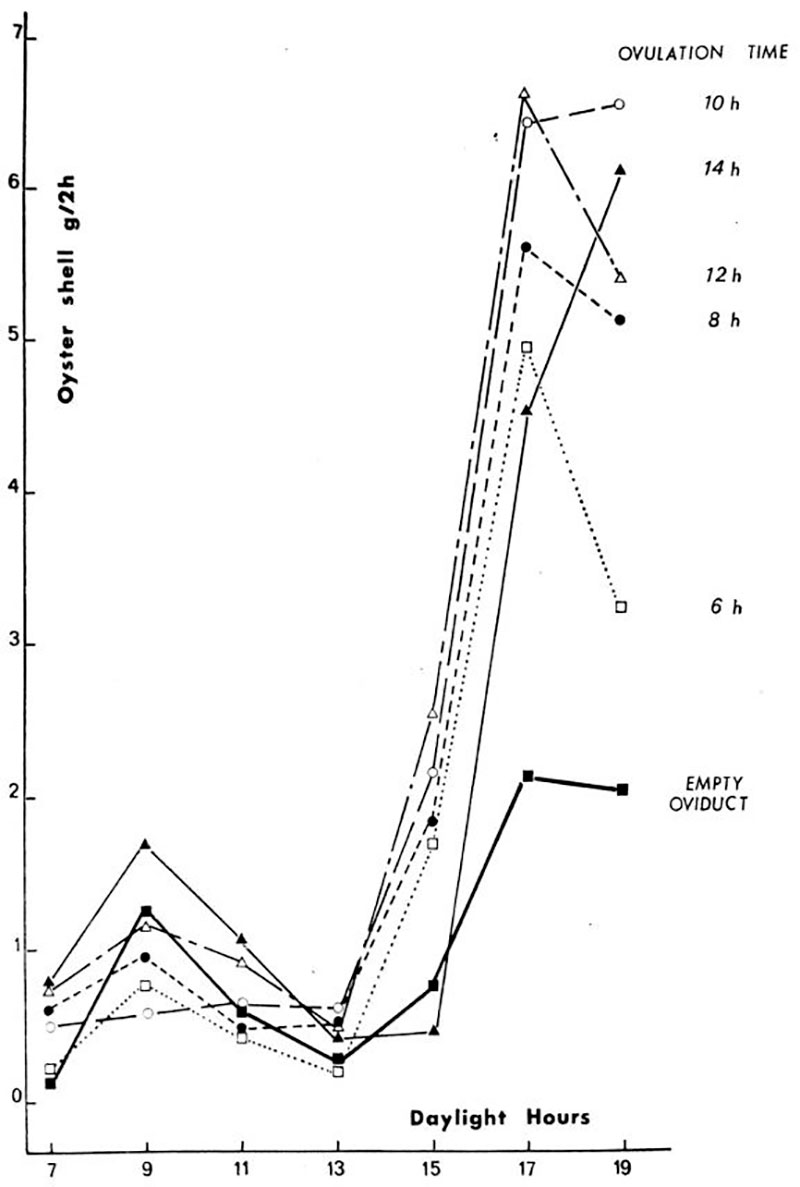
Figure 2: Combined effects of day time and egg position in the clutch upon voluntary oyster shell consumption (Mongin and Sauveur, 1974)
At night, there is a cyclical increase in the female sex hormone oestrogen which increases the solubility and transportability of calcium. If no lime is available in the gastrointestinal tract during this time, the reserves in the bone would be mobilized. To prevent this, the structure of the lime supplied should not be too fine so that it cannot be dissolved quickly and then excreted by the hen during the day, before being needed and used.
The benefits of feeding coarse lime (1.5 to max. 4 mm particle size) in the afternoon or evening hours have been demonstrated repeatedly (Banga-Mboko et.al. 2001; Diaz, 2008; Kruger, 2014). By doing so, the amount of the calcium derived from the feed is maximized and the calcium metabolism of the bone is minimized. Without adding to feed cost, this feeding program combines three advantages: reduced phosphorous level in the feed (saving limited resources), less metabolic work for the hens (and maintenance of bone strength), and significant reduction of phosphorus excretion. The reduced daily mobilization of calcium reservoir in the bones would reduce the phosphorus demand.
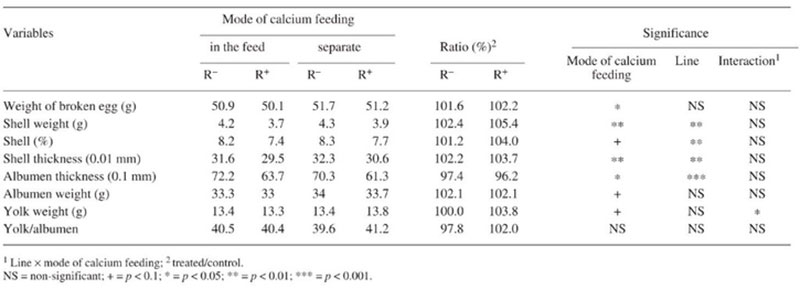
Table 1: Effects of separate calcium feeding and line on egg and shell quality (Banga-Mboko et al. 2001)

It is obvious that an optimally timed supply of lime is import for the maintenance of bone strength. If a laying hen extracts calcium from the reservoir of her bones during the night, the lime will not only be mobilized from the medullary bone, but also from the marrow of the structural bones. This reservoir cannot be fully restored during very long laying sequences, unlike the reservoir in the medullary bone marrow. The laying hen can only “repair the damage” during laying pauses or moulting, which allows the lime to be stored in the marrow of the structural bones and practically rebuilds the reservoir. A modern laying hen producing eggs in long “clutches”, has to utilize the reservoir of the bones almost daily, compromising the long-term bone stability and increasing the well-known risk of bone fractures (Whitehead, 2004). For optimal implementation of these findings, it would be necessary to provide two different feed mixtures: feed with lower calcium content and finer particles offered in the morning hours, feed with a higher lime content and coarse particle size during the afternoon and evening hours. Where it is impossible or too difficult to implement this recommendation in practice, a significant effect can be achieved by supplementing the single ration with coarse lime in the afternoon and evening feedings. Experience in practice has shown that this not only improves shell stability, but also bone stability and the general health of laying hens. Mini silos to supplement the feed and provide the right dosage of lime at the right time are becoming increasingly popular worldwide.
Mini silos for top dressing of lime:
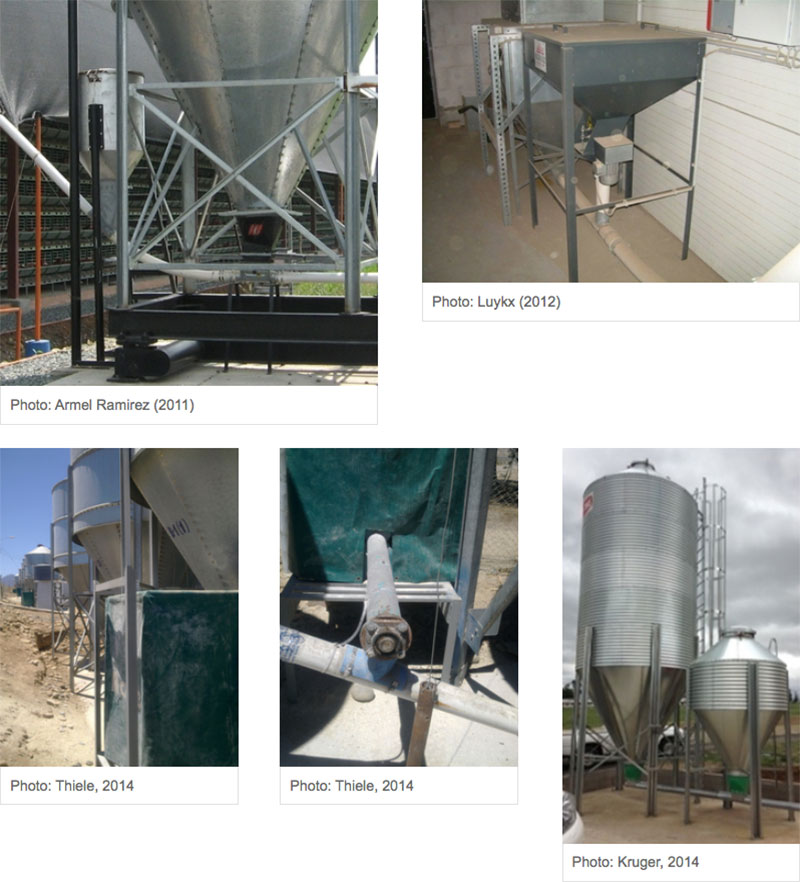
As a general rule, we must assure that all essential components of the feed will become available for each hen, i.e. we must avoid segregation of feed components between feed mill and the hens. This applies to all nutrient-relevant raw materials as well as minerals and vitamins. Modern laying hens are adaptable to a wide range of different feed composition, but are likely to express their full genetic potential best on homogeneous mash feed with good structure. With good feed quality, the use of fine or coarse lime is unproblematic. In case of pelleted or crumbled layer feed (which we do not recommend for layers), raw material components were mostly milled through a hammer mill which makes it difficult to add coarse lime. In this case lime must be added after pelleting; otherwise the lime content will have little value for the laying hen.

Summary
After briefly reviewing the physiology and timing of shell formation, this article focuses on the needs of the modern laying hen in terms of feed composition and feed structure. Supplying lime of correct particle size at the right time of the day will help the hens to produce a maximum number of saleable eggs over a long period of time. At the same time, the risk of bone fractures and excretion of unused phosphorous can be reduced. This feeding practice combines the interests of farm income (more saleable eggs due to better shell quality), animal welfare (less demanding for the metabolism and fewer broken bones) and environmental protection (less of the limited resource phosphorous in the feed and excreted as pollution).References
Bar, A., 2009. Calcium transport in strongly calcifying laying birds: mechanism and regulation. Published in: Comparative biochemistry and physiology, Part A: Molecular & integrative physiology. 152:447-569.Banga-Mboko, H., A. Bordas, F. Minvielle, and P. Leroy, 2001. Effects of separate calcium feeding on laying hens selected for low (R-) or high (R+) residual feed consumption. Anim. Res. 50:239-250
Clunies M., and S. Leeson, 1995. Effect of dietary calcium level on plasma proteins and calcium flux occurring during a 24 h ovulation cycle. Can. J. Anim. Sci. 75:439-444.
Diaz, G., 2008. personal communication
Farmer, M. and D.A. Roland Sr., 1986. Influence of dietary ingredients on calcium utilization in the laying hen. Polt. Sci. 65:345-351.
Hughes, B.O., 1972. A circadian rhythm of calcium intake in the domestic fowl. Br. Poult. Sci. 13:485-493
Hurwitz, S. and A. Bar, 1966. Rate of passage of calcium-45 and yttrium-91 along the intestine, and calcium absorption of the laying fowl. J. Nutr. 95, 647-654.
Kruger, R. ,2014. personal communication
Leeson S. and J.O. Summers 1978.Voluntary food restriction by laying hens mediated trough dietary self-selection. Br. Poult. Sci. 19:417-424
Lohmann Tierzucht GmbH, 2011. Management guides various varieties.
Mongin, P. and B. Sauveur 1974. Voluntary food and calcium intake by the laying hen. Br. Poult. Sci. 15:349-359.
Whitehead, C. C., 2004. Overview of bone biology in the egg-laying hen. Poult. Sci. 83:193-199.



